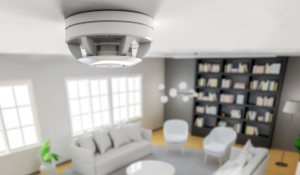How to Identify a Bad Gas Flame: A Simple Guide for Everyone
If you rely on gas appliances in your home—like your stove, heater, or fireplace—understanding how to identify a good gas flame versus a bad one is essential for safety and efficiency. A properly functioning gas flame should not only look good, but it should also operate safely. Let’s break it down in easy-to-understand terms so you can feel confident monitoring your gas appliances!
What Should a Good Gas Flame Look Like?
A healthy gas flame is typically blue with a slight hint of yellow at the tip. Here’s what to look for:
Characteristics of a Good Flame:
- Colour: Blue
– What It Means: A blue flame indicates complete combustion, meaning your gas is burning efficiently.
– Why It’s Good: It produces heat effectively and minimizes harmful emissions like carbon monoxide.
- Steady Shape
– What It Means: A good flame should have a steady, uniform shape without flickering or wavering.
– Why It’s Good: This stability means there’s a proper balance of gas and air.
- No Soot or Residue
– What It Means: There should be no soot build-up on the burner or around the appliance.
– Why It’s Good: Clean combustion means your appliance is working efficiently and safely.
Identifying a Bad Gas Flame
Now that you know what a good flame looks like, let’s explore the signs of a bad gas flame. Recognizing these issues early can help prevent safety hazards.
- Colour: Yellow or Orange
– What It Looks Like: If your flame is yellow or orange instead of blue, it’s a sign of incomplete combustion.
– What It Means: This can lead to carbon monoxide production, which is dangerous.
- Flickering or Wavy Appearance
– What It Looks Like: A flickering flame that dances or moves around.
– What It Means: This may indicate too much air is mixing with the gas, or there’s a problem with the gas supply.
- Soot or Black Marks
– What It Looks Like: Soot build-up around the burner or on pots and pans.
– What It Means: This indicates incomplete combustion, leading to inefficiency and possible health risks.
- Weak or No Flame
– What It Looks Like: A flame that is barely flickering or completely out.
– What It Means: This could mean a clogged burner or an issue with the gas supply, making the appliance ineffective.
- Burning Smell
– What It Looks Like: A strong, unusual burning odour.
– What It Means: This may indicate a gas leak, which is a serious safety hazard and should be addressed immediately.
What to Do if You Identify a Bad Flame
If you notice any of the signs of a bad gas flame, here’s what you should do:
- Turn Off the Appliance
Safety first! Immediately turn off the gas appliance.
- Ventilate the Area
Open windows and doors to let fresh air circulate, especially if you smell gas.
- Check for Gas Leaks
If you suspect a gas leak, avoid using any electrical devices or flames in the area. You can use a soap-and-water solution to check for leaks; bubbles will form if there’s a leak.
- Call a Professional
Contact a qualified technician to inspect and repair your appliance. They can identify the problem and ensure everything is functioning safely.
- Install a Carbon Monoxide Detector
If you don’t already have one, install a carbon monoxide detector in your home to alert you to dangerous gas levels.
Conclusion
Knowing how to identify a bad gas flame is crucial for your safety and the efficiency of your gas appliances. Remember, a good flame is blue, steady, and free of soot, while a bad flame can show up in various warning signs, from yellow or flickering flames to burning smells.
Stay vigilant and keep your home safe by regularly checking your gas appliances. If you ever have doubts or concerns, don’t hesitate to seek professional help. Your safety is the top priority!
—
Feel free to add images or graphics to enhance the post and make it even more engaging!



